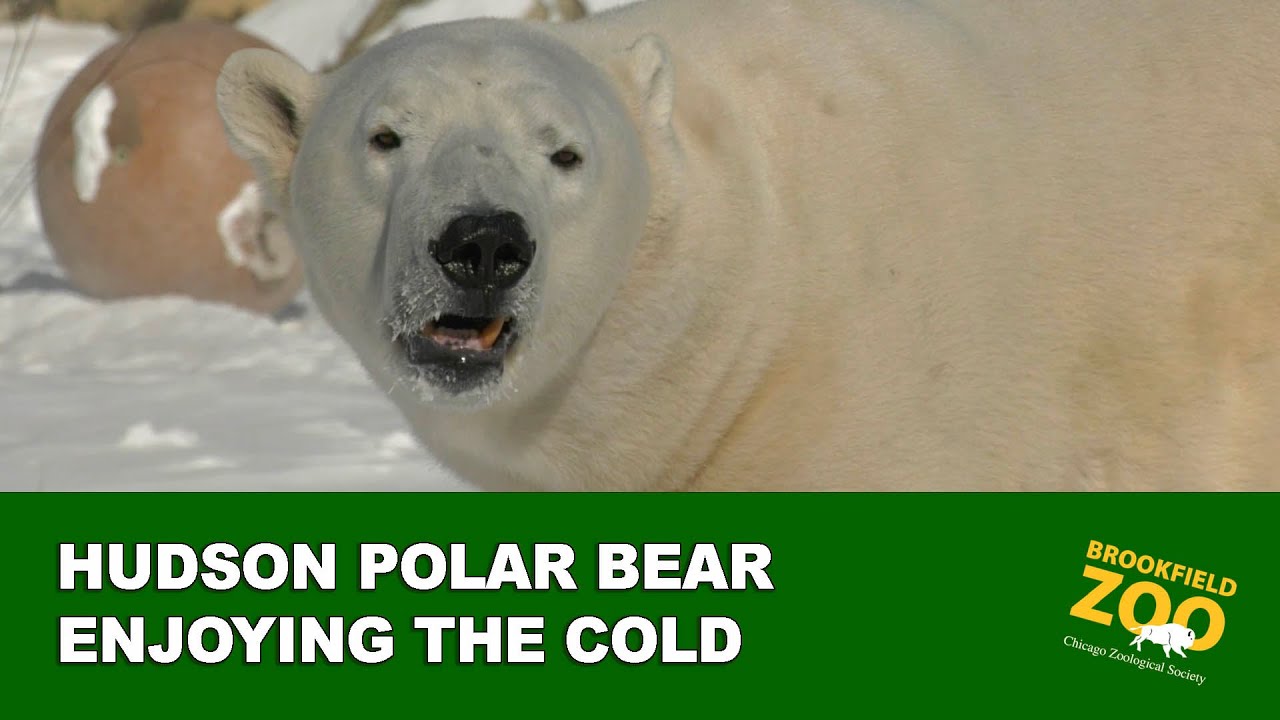– The resilient nature of polar bears in chilly climates and how they are built to survive and thrive in cold weather.
– The dietary habits of polar bears in captivity, focusing on Hudson’s preference for carrots and grapes.
– How zoos simulate natural polar bear habitats and behaviors, enhancing animal welfare even in urban settings.
As a crisp breeze sweeps through the leafless trees, tossing the remnants of autumn’s glory to the frosted ground, the sights and sounds of Chicago’s citizens bundling up against the elements are commonplace. Yet, amid this wintry chill, one resident is unfazed by the plummeting mercury—Hudson, the polar bear, finds this climate not just tolerable but downright invigorating.
Hailing from the Arctic’s icy expanses, Hudson reigns as one of the city’s most unique, if shaggy and nonchalant, celestials. As humans layer on scarves and gloves, this magnificent creature embodies the spirit of winter itself, reveling in the very breath of the cold that so many of us seek to escape. To understand his comfort is to glimpse a world where the snow never melts, and the ice is eternal—a world Hudson carries within him.
It’s not Hudson’s fur that insulates him against the frigid assaults, but rather a marvel of evolutionary engineering. Beneath his thick, whitened coat lies a layer of fat – a fatty embrace – as nature’s barrier against the biting cold. This wondrous adaptation means that Hudson is toasty in his dermal winter jacket while we shiver in our thermal wear.
But the frosty climate is not merely a comfort for Hudson; it provokes his instincts and behaviors. In the wild, polar bears are solitary travelers, patrolling the ice sheets and snow drifts of the far north. They are adept swimmers, often journeying between floating blocks of ice in search of their preferred diet of seals. Yet, in his Chicago habitat, Hudson maintains his robust form by indulging in a specially curated menu that reflects his nutritional needs and the peculiarities of his captive environment.
It may surprise many that Hudson’s palate extends beyond the staple marine cuisine of his wild counterparts. While seals might not be on the daily menu, Hudson displays a refined taste for crisp carrots and sweet, juicy grapes—foods that provide essential vitamins and a diversity of textures and tastes that keep life interesting for a bear far from home. This varied diet is not simply a frivolous indulgence; it underpins a carefully designed nutritional plan that ensures his health and vitality remain as steadfast as the ice caps he once roamed.
Caring for such an animal is no small task, and it falls to those whose lives are dedicated to understanding and replicating, as best as possible, the natural environment from which Hudson hails. These caretakers strive ceaselessly to weave naturalistic threads into the fabric of his enclosed world. From the chilly pool that mimics the arctic waters to the provision of his favored icy snacks, each aspect of his refuge is tuned to echo the call of his ancestral home.
Yet beyond the dietary and environmental simulacra lies an even more profound understanding of Hudson’s needs—the psychological and emotional dimensions. It’s crucial for Hudson, like all creatures, to find engagement that stokes his curiosity and encourages natural behaviors. Thus, the caretakers innovate constantly, providing enrichments that range from puzzle toys filled with rewards to large objects that mimic potential prey, sparking the cognitive interplay of a predator’s instincts.
Observing Hudson, one may witness a performance of such natural behaviors. With the grace of a dancer and the might of a gladiator, he paws at giant toys and plunges into the icy waters with no hesitation. This dance of the wild played out upon a stage of human design is a testament to the remarkable adaptability of his species and the grit that allows polar bears to flourish where others falter.
In the light of Hudson’s charisma and charm, one cannot help but think of the distant, shrinking realms of ice and snow, where the polar bear’s tale is not so studded with carrots and grapes but is haunted by the specter of a warming world. As we observe Hudson, it is impossible not to draw parallels to the plight of his kin in their natural habitations, where the cold is not a snap trying the patience of urban dwellers but a lifeblood receding before our very eyes.
The story of Hudson is more than the tale of a bear beating the chill; it’s a narrative wrapped in the broader context of conservation and the complex relationship between mankind and the wild. As much as Hudson does not notice the cold, he likely does not grasp the fascination and affection he inspires in the hearts of those who watch him. He stands as an unwitting ambassador for an environment under assault, an example of how our efforts to understand and replicate nature within our cities can foster a deeper appreciation for the world beyond.
Consequently, when the wind howls and the frost bites, let us think of Hudson—not only as a marvel of nature’s design but as an emblem of hope. As he pads softly through the snow, unbothered by the winter winds, let his resilience inspire us. Our collective actions can shape the future of his wild brethren, turning the tide against the warmth that threatens their icy domain.
So, as the city’s children, with cheeks rosier than the most radiant sunsets, rush to glimpse the polar bear who loves the cold, let us take a lesson from Hudson. Let us savor the refreshing crispness of the air, find joy in the turn of the seasons, and always remember that within each of us lies an untapped strength to adapt, appreciate, andprotect.
*****
Source Description
Not everyone in Chicago is bothered by the recent cold weather – the Hudson Polar Bear doesn’t seem to notice the cold! He’s more concerned about snacking on carrots and grapes!

